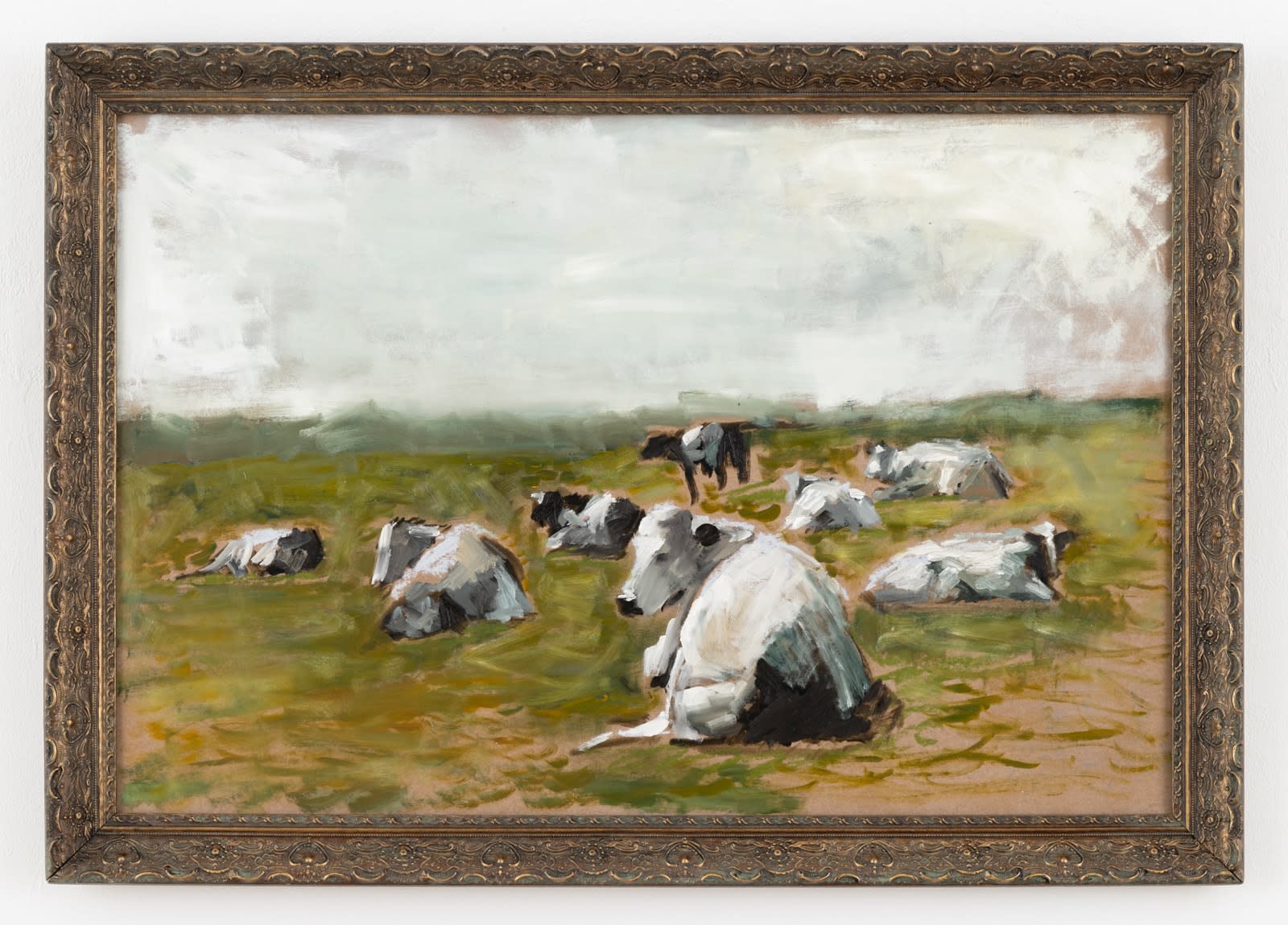Nicolas Ceccaldi
61 x 90.8 cm / 24 x 35.7 inches
Framed dimensions:
71.8 x 101.6 cm / 28.3 x 40 inches
in the artist‘s studio in New York from screenshots of google street view, or agricultural and tourism websites from places like Normandy, Corsica, and Belgium. Playing on a postcard idea of Europe the groups of cows appear to be in a state of oneness with their environment and become a surface for projections - e.g. the idea of a simple life - and interpretations. The hanging on the walls of the former “Kunst im Heim”
(Art in your Home) pavilion, a testament to the GDR’s shift in representation away from Stalinist historicism towards a “second modernism”, complicates the question of order of genres and the apparent generic nature of these painted cows in ornate frames. Against socialist realism, which formally tried to unite romanticism and realism and glorified the collective mastery of nature as a result of human labor, this contemporary pastoral provokes the question of whether art can ultimately transform further to become a genuine culture for all.
